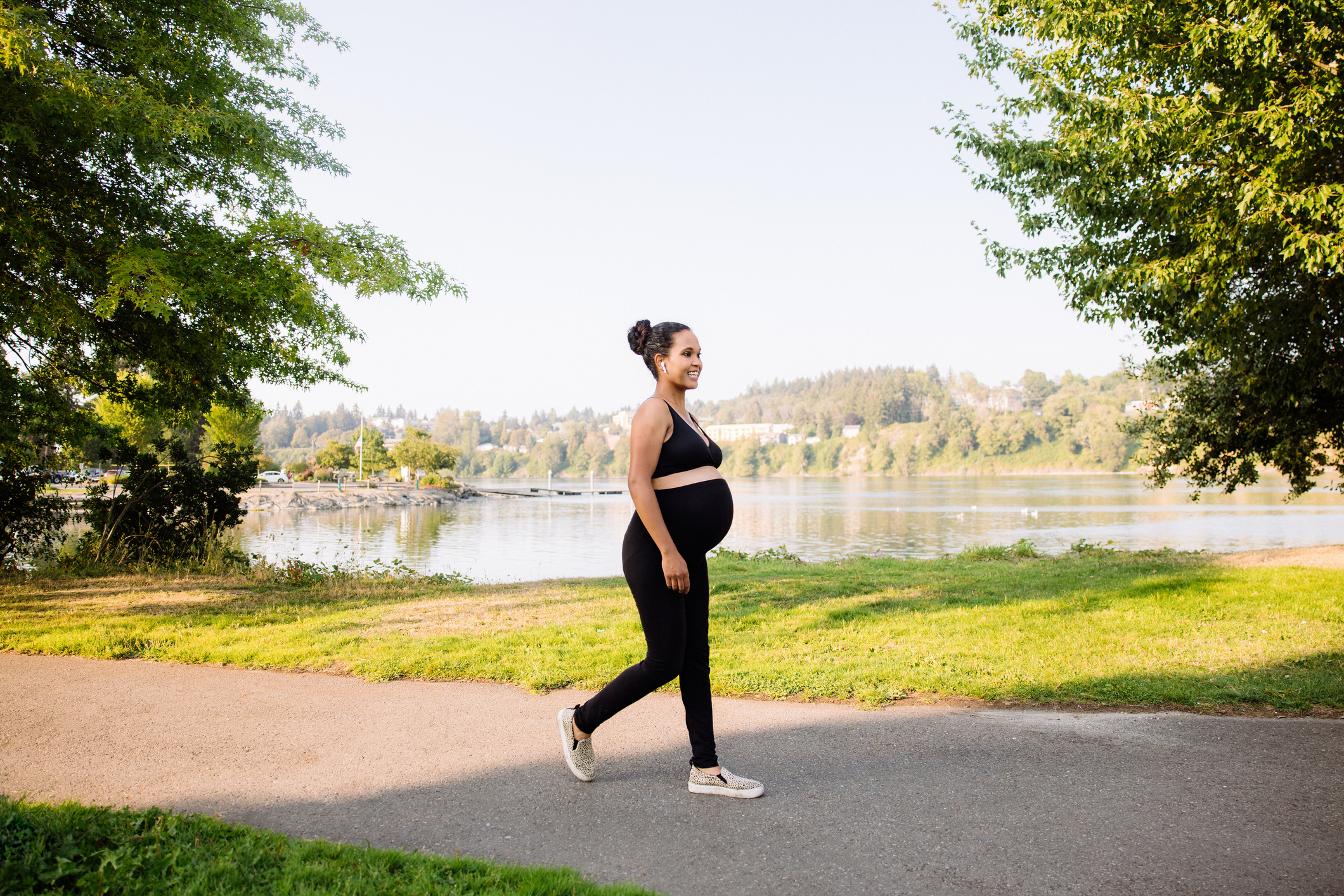There are a variety of resources that exist to advise individuals on best practices for exercising throughout pregnancy. International evidence-based health guidelines typically recommend at least 150 minutes/week of moderate-intensity physical activity in those without contraindications during pregnancy. While these recommendations guide physical activity during pregnancy in the general population, they are not developed — or possibly suited — for high-performance elite athletes.
Elite athletes are thus left to seek guidance from their own personal team of health and prenatal care providers, online sources or fellow elite female athletes. This circumstance holds one major caveat: There is a significant lack of research and published data examining elite athletes’ approaches to training throughout pregnancy and subsequent postpartum athletic performance outcomes. This is especially true as it pertains to runners.
This paucity of information has been identified by the International Olympic Committee (IOC)’s expert group on pregnancy as a gap that needs to be addressed. Similarly, the authors of the 2017 ACSM Team Physician Consensus Statement Female Athlete Issues for the Team Physician reported on a number of matters, including sport-specific details around exercise throughout pregnancy.
Our study, published in the January 2023 issue of Medicine & Science in Sports & Exercise, centered on two primary focal points: training and performance. Included among our participants were 42 elite to world-class female distance runners (>50% have competed at the Olympics/World Championships — including medalists — in distances from 1,500 m to the marathon). Via questionnaires, first we collected information on elite runners’ training before (one year prior), during (first, second and third trimesters) and after pregnancy (including volume, intensity and type). Second, we analyzed elite runners’ performance data pre and post pregnancy (in the one- to three-year period prior to pregnancy compared to the one- to three-year period post pregnancy — thus omitting the one year during pregnancy).
There were several key takeaways from this study. From the first to the third trimester, the participants decreased their training in terms of both running volume and intensity. Additionally, when compared to pre pregnancy, the participants’ average training pace was significantly slower for all time periods during pregnancy.
Notably, coupled with the decrease in running duration from the first to third trimester was an increase in time spent cross-training. However, even at the third trimester, which marked the lowest level of training (i.e., approximately 300-350 minutes of exercise/week, most of it cross-training), these athletes were still engaging in a much greater degree of physical activity than recommended in guidelines for pregnant individuals. Furthermore, our participants returned to some level of exercise approximately six weeks postpartum and reached 80% of their pre-pregnancy training volumes by three months (although this was highly variable depending on the individual athlete’s context of injury, time and/or performance goals).
Another crucial piece to acknowledge is injury. Though 50% of our participants reported an injury in the year postpartum that delayed their return to training/competition, there was no relationship between any specific approach to training nor type of delivery (vaginal or caesarean) to predict risk of injury.
The most novel element of the study was the actual “in race” competition performance analysis. From a performance standpoint, of the participants who intended to return to equivalent performance levels post pregnancy (60%), we found no significant difference between pre- and post-pregnancy performances. In addition to this, nearly half (46%) of these athletes improvedperformances post pregnancy. Our results thus paint a clear picture that female athletes may not only come back to an elite/world-class level after giving birth — many come back faster and, on average, not slower.
It is our hope that this study provides important and much-needed insights into the training volumes and intensities elite to world-class runners undertake throughout pregnancy, as well as expectations and timelines for post-pregnancy return to training and competition. In addition to benefitting athletes themselves, such implications may be practical for those who play critical roles in guiding elite pregnant athletes through the several phases of conception, pregnancy, postpartum and return to performance, including coaches, health professionals, athletic sponsors, athletic governing bodies and policymakers.
We echo the sentiment that was put forward by the IOC’s expert group on pregnancy that the return to training postpartum for elite athletes should be one that is individualized, both across and within specific sports. While our findings may serve other pregnant elite athletes outside of running, we encourage future research to explore the potential of employing a similar study design within different sports. Such research is crucial to address equity in sport research and to challenge the historic assumption that pregnancy/motherhood impede female athletes’ pursuit of athletic excellence.
Francine Darroch, M.Ed., MPH, Ph.D., is an assistant professor in the Department of Health Sciences at Carleton University in Ottawa, Ontario. She is an interdisciplinary researcher with expertise in mixed-methods health research, inequities in pregnancy and elite sport/physical activity, and maternal health. As founder of the Health and Wellness Equity Research Group at Carleton University, she leads community-based participatory research endeavors, including research with a team of Parenting Track and Field Olympians and interdisciplinary colleagues to examine issues of importance to the athletic community such as training during pregnancy (advocacy for sport-specific guidelines) and gender equity in athletic governance and sponsorship.
Trent Stellingwerff, Ph.D., FACSM, serves as a senior advisor for research and development at the Canadian Sport Institute Pacific in Victoria, Canada. His primary sport and research focuses are in the field of physiology and nutrition interactions, with emphasis on female health and performance, as well as environmental (altitude and heat) expertise. Trent has been an invited expert presenter and author for many international nutrition consensus statement meetings with the IOC, FINA and World Athletics. Over the years, Trent has attended and serviced athletes and sports at four Olympic Games, four Commonwealth Games and more than 15 World Championships. He coaches several elite Olympic runners — including a few who have run faster post pregnancy.
Viewpoints presented in ACSM Bulletin commentaries reflect opinions of the authors and do not necessarily represent positions or policies of ACSM. Active Voice authors who have received financial or other considerations from a commercial entity associated with their topic must disclose such relationships at the time they accept an invitation to write for The ACSM Bulletin.



